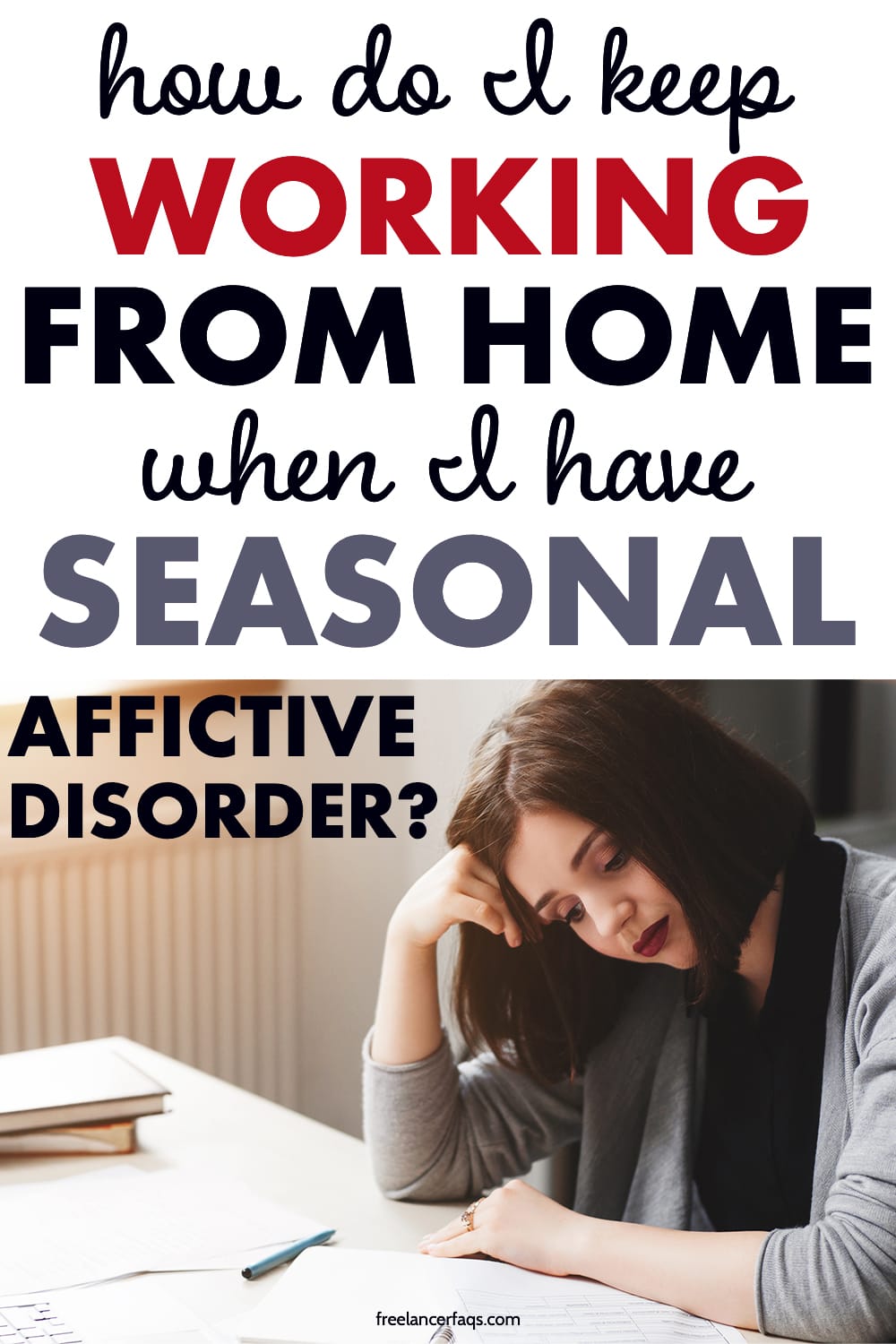The clocks have turned back an hour, the days are becoming shorter, and there’s frost in the air.
Are you finding that the changing of the seasons is making you more irritable than it rationally should? Are you exhausted even though you think you got enough sleep last night? Are you finding it hard to get up and go to work or to carry out your normal day-to-day obligations?

Are you isolating yourself from the outside world and shutting away from friends and family?
The clocks have turned back an hour, the days are becoming shorter and you may have SAD.
You might have a case of the SAD’s.
Seasonal Affective Disorder (SAD) is more than just the winter blues, and this type of depression might be to blame if you’re experiencing any of these changes in behavior.
“[Y] our symptoms start in the fall and continue into the winter months, sapping your energy and making you feel moody” as stated by the Mayo Clinic.
With the stigma that exists in our culture around mental health issues still today, it wouldn’t surprise me to find out that there are many sufferers of SAD who don’t discuss the problems they’re facing with winter depression and therefore have no idea that it’s something you can help control with the right tools. Know that you don’t have to suffer alone and there are ways of feeling better.
If you’re a freelancer that works at home, the challenges SAD can present to you might exacerbate itself because you have to be your number one cheerleader and motivator to get any work done.
If you’re suffering from depression, this can be a seemingly impossible feat.
Before you curl up into a little ball of hopelessness and try to drown out the world (been there, done that), here are five easy and natural tips to help you get through the winter that will help boost your mood and energy levels so you can keep writing like a boss:
1. Invest in Light Therapy
Artificial light therapy can help increase the feel-good chemicals in your brain and according to the Canadian Mental Health Association, 60-80% of SAD sufferers find relief by using light therapy.
I haven’t used light treatment myself, but I’m seriously considering getting my hands on it this winter and seeing what the fuss is all about.
2. Get Enough Vitamin D
Most North Americans lack the right amounts of this essential vitamin.
Vitamin D is known to help keep your immune system functioning properly, can ward off depression and helps support brain health long term. Vitamin D isn’t something that is found naturally occurring in most foods and other than getting enough sun (which is the very thing we don’t have that is attributing to this problem in the first place), supplements are a great alternative option.
Ever since I began taking vitamin D supplements, I’ve felt happier and healthier for sure.

3. Get Your Body Moving
Exercise is one of the best tools I’ve found for coping with Seasonal Affective Disorder, but also the hardest one to implore when you’re feeling particularly down because depression can make you feel paralyzed.
To get energy though, you have to create energy, and this can come to you in a matter of minutes if you’re willing to give it a try. A 30-minute brisk walk will have you feeling more joyous and help give you that rosy-sunglass feeling.
Even if you don’t think you can muster up the strength for a jaunt, you’ll be amazed at how you feel by just getting outside and making it down to the end of the block. You very well might be inspired to keep going after all.
With exercise, you are pumping more oxygen into your system and feeding your body with a dose of happy hormones.
If you give this a try, I promise you’ll feel better almost immediately. I always find walking to help clear my head of negative emotions and can help make my work more productive when I return to my laptop.
You never know what this activity might inspire in you creatively, and I’ve had some of my best “aha” moments while walking.
If you reside in a place where it is just too cold some days to get outside, yoga is a great alternative. Yoga is great for calming your mind and helping you feel good about yourself. It’s incredible the difference mindfulness can have on the state of your wellbeing.
If you want to feel happy and silly, Fitness Marshall on Youtube is also great because he wipes the blues right off your face.
He makes exercise fun, and the best part is you won’t even realize you’re working out. I promise you’ll have a goofy grin on your face as you try to keep up with his dance moves and might even break out into awkward laughter at yourself as you stumble over your own two feet trying to keep up with his rhythm.
Don’t worry though, no one’s watching and laughter is the best medicine after all.
4. Be Grateful For What You Have
As an introvert, I am grateful to have found a passion for freelance writing that allows me to work from home and to be my own boss.
I am so thankful to have taken on an entrepreneurial mindset: To go out, create, and do what I love. I cherish the fact that I get to spend the days indoors with my dogs, and that I am setting up a business for myself that will allow me to enjoy raising children as a stay-at-home mom when that time comes.
I love that I will be able to continue contributing to my household without sacrificing time spent away from the family.
While working from home might make it more of a challenge to stay motivated to work, remind yourself that you chose this business and try to remember the exciting rewards you will reap from if you keep going, and that you are one of the lucky ones to have found a career you can enjoy.
I also suggest keeping a journal and writing a list every day of five things you are grateful for and to also keep a record of goals you want to accomplish.
Journaling will remind you to be grateful and will help put your moody blues in perspective and keep you on a path of positivity and productivity.
5. Make a Killer Playlist
I find music I enjoy to be essential to my creative workflow.
There is a song for every mood or experience you are going through, and I believe the art of song has incredible healing properties. Music makes me feel like I’m less alone and motivates me to keep going.
Lyrics and music can be extremely powerful creativity spark igniters, and you never know if a song will inspire you to write your next masterpiece. There’s a genre out there for you that will match your tempo of writing and workflow I am sure.
If you think you might be a sufferer of Seasonal Affective Disorder or are already aware that you have it, know that you are not alone and there are many self-help tools to help get through the winter months.
Keep reminding yourself of the things that bring you joy and never let those things slip away. If these tips, or others you’ve found for yourself, aren’t cutting it, seek help from a professional. It is a great sign of strength, rather than weakness when someone gets the courage to ask for help.
In our society, we are still coming to terms with mental health being as real as the physical kind and remember that everyone needs support at some time or another and that there are more people out there that understand than you might think.



Leave a Reply